According to the European CO2 Storage Directive, to guarantee the safe and long-term storage of CO2:
- there must be no detectable leakage
- the observed behaviour of the injected CO2 must conform to the modelled behaviour
- the operator should be able to demonstrate the storage site is evolving towards a state of long-term stability
Long-term geochemistry
The Carbon Research into Underground Storage (CRIUS) project studied fluids and gases from natural CO2 reservoirs and from sites where CO2 is being actively injected underground. This research was to determine the rates of the mineral–water–CO2 reactions in natural settings. These reactions were duplicated in laboratory experiments so the processes could be observed under controlled conditions.
Laboratory experiments, numerical modelling and natural analogue field studies were brought together in the ULTimateCO2 project to understand long-term processes at storage-site scale. It investigated CO2 trapping mechanisms in the reservoir, reactions in potential caprocks, fault reactivation and efficiency of well-bore casing cements within the storage site. The final project report aimed to provide answers to likely questions from site operators and national authorities about uncertainty downstream of the closure of a CO2 geological storage site.
Ecosystems and underground drinking water
The potential impacts of CO2 on underground drinking-water aquifers or near-surface ecosystems depend on the characteristics of the storage site and its surroundings, for example geology, soil or seabed sediment type and topography.
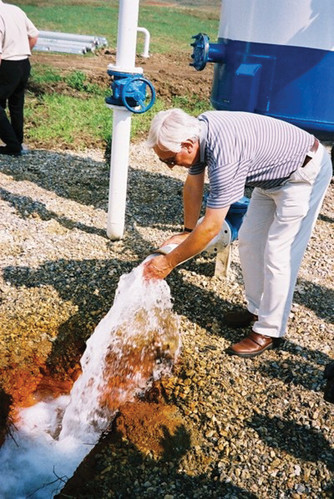
Naturally CO2-rich groundwater discharging from a borehole into a channel used for irrigating maize in Greece. © NERC.
Laboratory experiments, observations in areas of natural CO2 seepage and modelling have been widely used to investigate how marine organisms and communities are likely to respond to elevated levels of CO2 and to understand processes. Examples of such work are the Research into Impacts and Safety in CO2 Storage (RISCS), ECO2 and Quantifying and Monitoring Potential Ecosystem Impacts of Geological Carbon Storage (QICS) projects.
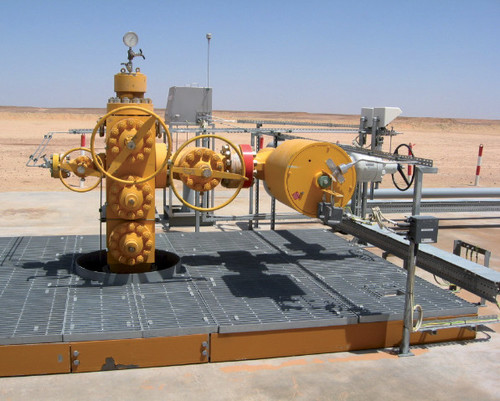
A CO2 injector at the In Salah CO2 storage site in Algeria. © NERC.
RISCS also examined the potential likelihoods and consequences of CO2 leakage on onshore ecosystems by field experiments releasing controlled amounts of CO2 below the ground (e.g. Grimsrud in Norway and ASGARD in the UK); field studies in areas of naturally occurring CO2, and modelling. The potential impacts of CO2 on drinking-water aquifers were examined through studies in France, Italy and Greece. Studies have also been carried out at In Salah (Algeria) on the Continental Intercalaire aquifer, a regional water source in the Sahara.
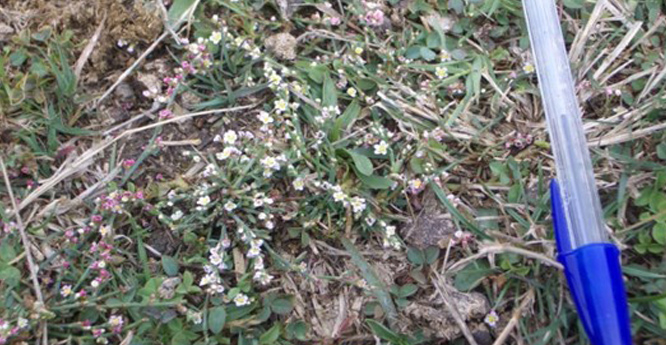
Plants present under varying CO2 levels near Florina, Greece. Image courtesy of the RISCS project.
The QICS project was the world’s first in situ sub-seabed CO2 release experiment. The controlled release was carried out in a small bay on the Firth of Lorn on the west coast of Scotland. A total of 4.2 tonnes of CO2 were released into the sediments at a depth of 11 m below the seabed.
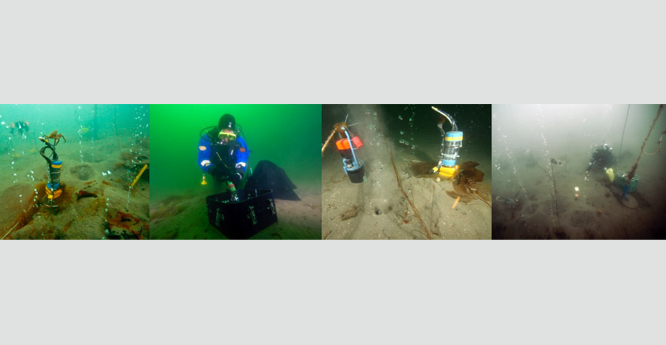
Showing from left to right: sea-floor CO2 sensor amongst bubble streams above the CO2 release point; diver collecting sea water samples; two seabed CO2 sensors near a stream of CO2 bubbles; diver collecting sediment core samples. Images courtesy of the QICS project.
Site closure
At the point of site closure it is a requirement that the operator demonstrates the long-term safety of a CO2 storage site. There is a pre-condition to transfer the responsibility of the abandoned site from the operator to a competent authority on a national level as set out in the EU CCS directive and the OSPAR guidelines. The BGS CCS team contributed to the CO2 Site Closure Assessment Research (CO2CARE) project by assessing the necessary technologies, procedures and protocols necessary to achieve site closure and developing best practice guidelines (Holloway et al., 2013).
IEAGHG impacts network
The International Energy Agency Greenhouse Gas (IEAGHG) research and development programme has established an Environmental Research into CO2 Storage Network. BGS helped to set up this network and has been active in the organisation of its annual meetings. It deals with all aspects of potential impacts from CO2 storage both onshore and offshore and involves researchers worldwide.
Beaubien, S E, Ciotoli, G, Coombs, P, Dictor, M C, Krüger, M, Lombardi, S, Pearce, J M, and West, J M. 2008. The impact of a naturally occurring CO2 gas vent on the shallow ecosystem and soil chemistry of a Mediterranean pasture (Latera, Italy). International Journal of Greenhouse Gas Control, Vol. 2, 373–387.
Blackford, J, Beaubien, S, Foekema, E, Gemeni, V, Gwosdz, S, Jones, D, Kirk, K, Lions, J, Metcalfe, R, Moni, C, Smith, K, Steven, M, West, J, and Ziogou, F. 2014. A guide to potential impacts of leakage from CO2 storage. Outcomes from the RISCS project (EU Seventh Framework Programme).
Bond, A E, Metcalfe, R, Maul, P R, Suckling, P, Thatcher, K, Walke, R, Smith, K, Rasse, D, Steven, M, and Jones, D. 2013. Systems analysis of field and laboratory experiments considering impacts of CO2 leakage in terrestrial systems. Energy Procedia, Vol. 37, 3394–3402.
Chadwick, R A, and Noy, D J. 2015. Underground CO2 storage: demonstrating regulatory conformance by convergence of history-matched modeled and observed CO2 plume behavior using Sleipner time-lapse seismics. Greenhouse Gases: Science and Technology, Vol. 5(3), 305–322.
Holloway, S, Chadwick, R A, and CO2CARE consortium. 2013. Best practice guidelines for the closure and transfer of responsibility for CO2 storage sites. Deliverable of the CO2CARE project (EU Seventh Framework Programme).
Jones, D G, Lister, T R, Smith, D J, West, J M, Coombs, P, Gadalia, A, Brach, M, Annunziatellis, A, and Lombardi, S. 2011. In Salah Gas CO2 Storage JIP: Surface gas and biological monitoring. Energy Procedia, 4, 3566–3573.
Jones, D G, Beaubien, S E, Blackford, J C, Foekema, E M, Lions, J, De Vittor, C, West, J M, Widdicombe, S, Hauton, C, and Queirós, A M. 2015. Developments since 2005 in understanding potential environmental impacts of CO2 leakage from geological storage. International Journal of Greenhouse Gas Control, Vol. 40, 350–377.
Krüger, M, Jones, D, Frerichs, J, Oppermann, B I, West, J, Coombs, P, Green, K, Barlow, T, Lister, R, Shaw, R, Strutt, M, and Möller, I. 2011. Effects of elevated CO2 concentrations on the vegetation and microbial populations at a terrestrial CO2 vent at Laacher See, Germany. International Journal of Greenhouse Gas Control, Vol. 5, 1093–1098.
Pearce, J, Jones, D, Blackford, J, Beaubien, S, Foekema, E, Gemeni, V, Kirk, K, Lions, J, Metcalfe, R, Moni, C, Smith, K, Stevens, M, West, J, and Ziogou, F. 2014. A guide for assessing the potential impacts on ecosystems of leakage from CO2 storage sites. Energy Procedia, Vol. 63, 3242–3252.
West, J M, Pearce, J M, Coombs, P, Ford, J R, Scheib, C, Colls, J J, Smith, K L, and Steven, M D, 2009. The impact of controlled injection of CO2 on the soil ecosystem and chemistry of an English lowland pasture. Energy Procedia Vol. 1, 1863–1870.
West, J M. McKinley, I G, Palumbo-Roe, B, and Rochelle, C A. 2011. Potential impact of CO2 storage on subsurface microbial ecosystems and implications for groundwater quality. Energy Procedia, Vol. 4, 3163–3170.
West, J M, Jones, D G, Annunziatellis, A, Barlow, T S, Beaubien, S E, Bond, A, Breward, N, Coombs, P, Angelis, D d, Gardner, A, Gemeni, V, Graziani, S, Green, K A, Gregory, S, Gwosdz, S, Hannis, S, Kirk, K, Koukouzas, N, Krüger, M, Libertini, S, Lister, T R, Lombardi, S, Metcalfe, R, Pearce, J M, Smith, K L, Steven, M D, Thatcher, K, and Ziogou, F. 2015. Comparison of the impacts of elevated CO2 soil gas concentrations on selected European terrestrial environments. International Journal of Greenhouse Gas Control, Vol. 42, 357–371.
Wragg, J, West, J M, and Bateman, K. 2013. Potential impact of CO2 on subsurface microbial ecosystems and implications for the performance of storage reservoirs. Energy Procedia, Vol. 37, 800–805.
Ziogou, F, Gemeni, V, Koukouzas, N, De Angelis, D, Libertini, S, Beaubien, S E, Lombardi, S, West, J M, Jones, D G, Coombs, P, Barlow, T S, Gwosdz, S, and Krüger, M. 2013. Potential environmental impacts of CO2 leakage from the study of natural analogue sites in Europe. Energy Procedia, Vol. 37, 3521–3528.
Contact
If you want to discover more then please contact Jonathan Pearce.
You may also be interested in
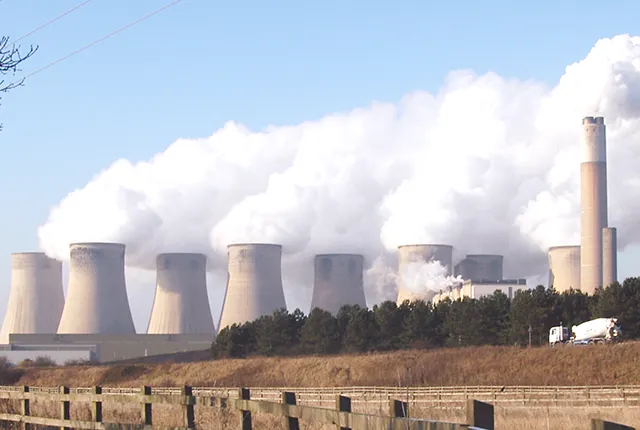
Carbon capture and storage
Studying carbon dioxide storage as a recognised European centre of excellence in a number of research areas.


